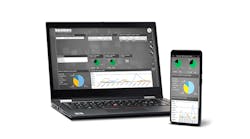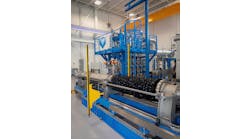Every month, Control's editors take a specific product area, collect all the latest, significant tools we can find, and present them here to make your job easier. If you know of any tools and resources we didn't include, send them to [email protected], and we'll add them to the website.
FLOWMETER CALIBRATION VIDEO
Fluid Components International
800/854-1993
www.fluidcomponents.com
This video provides an overview of the calibration process, explaining the importance of flowmeter calibration with actual gases to achieve superior accuracy rather than using inferred air equivalency methods. It also contains a video tour of FCI''s Flow Calibration Laboratory. A direct link to this five-minute video is found at www.fluidcomponents.com/Industrial/Support/CalLabVideo.asp.
CALIBRATION—ALL YOU NEED TO KNOW
Beamex
800 888-9892
www.beamex.com
Beamex offers Ultimate Calibration, a 170-page book containing 16 articles covering all aspects of calibration and a glossary of calibration terms from A to Z. The book is free with registration. The direct link is at www.beamex.com/campaign/beamex-book_v1.phtml. Also check out the larger Beamex Resource Center for other resources, including white papers, technical articles, tutorials and other presentations. This direct link is at www.beamex.com/download/resource_center_v1.html.
CALIBRATION CENTRAL
Fluke Calibration
877/ 355-3225
http://us.flukecal.com
The "Literature and Education" page at Fluke Calibration contains links to dozens of tutorials, white papers, videos and other material on all types of instrument calibration. Subjects covered include metrology, electrical, temperature and pressure instrument calibration, and data acquisition and test equipment. The direct link is http://tinyurl.com/3q8ftok.
ACCURATE INSTRUMENTATION
Swagelok
www.swagelok.com
Swagelok has a three-part series on ensuring accuracy in analytical instrumentation. "Understanding and Measuring Time Delay" is intended to enhance understanding of the causes of time delay and to provide the tools required to calculate or approximate a delay within a reasonable margin of error. "Calibrating the Analyzer" covers how error or contamination can be introduced through calibration; when calibration can—and cannot—address a perceived performance issue with the analyzer; how atmospheric pressure or temperature fluctuations can undo the work of calibration; and when and when not to calibrate. “Maintaining a Representative Sample” reviews the issues leading to an unrepresentative sample and provides recommendations on how to avoid a compromised sample. It will discuss deadlegs and dead spaces; component design and placement; adsorption and permeation; internal and external leaks; cross contamination in stream selection; and phase preservation. A link to all three articles is at http://tinyurl.com/3wq6kv7.
CALIBRATING SMART INSTRUMENTS
Martel Electronics
800/821-0023
www.martelcalibrators.com
What is a smart instrument and how do you calibrate it effectively? Wait a minute, I thought I didn't need to calibrate a smart transmitter. There's more to it than you might think. “The Calibration of Smart Instrumentation—A Better Way” explains smart instrumentation, and why calibration is still necessary, plus how to do it. Registration required. The direct link is http://tinyurl.com/3wkfxmy.
MODULAR INSTRUMENT CALIBRATION
National Instruments
800/531-5066
www.ni.com
"Calibrating Modular Instruments" examines a modular instrumentation platform and when and how to calibrate modular instrumentation. The fundamental principles of metrology and calibration are the same regardless of whether the instrumentation platform is based on modular or traditional instruments. However, the flexibility of the modular platform and the software-defined interface allow for a variety of options for calibrating these instruments. To view, visit http://tinyurl.com/2dkhzma.



